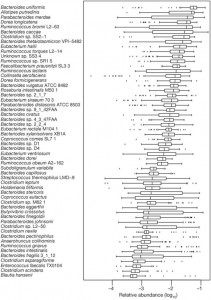Two inexpensive blood tests should be done routinely, but often aren’t: Vitamin D levels (by serum 25-hydroxyvitamin D) and thyroid stimulating hormone levels (TSH). There are few easier ways to substantially improve health than to normalize levels of these hormones.
One difficulty, however, is disagreement over what “normal” levels are. The standard “normal” range for TSH on lab tests is about 0.5 to 4.6 mIU/L. This range originally encompassed two standard deviations about the US mean, meaning that 95% of the population fell in the “normal” range. Unfortunately, evidence that TSH values in this range were healthy has always been lacking. In fact, many people with “normal” TSH live with symptoms of hypothyroidism.
As awareness has grown of the biological significance of thyroid hormone, researchers have looked more closely into the correlation of TSH levels with health. This research is revealing is that many people are thyroid-deficient and that improving thyroid status can dramatically improve health.
The best research has been conducted in Europe:
- The HUNT study of 25,000 healthy Norwegians found that their prospects were substantially affected by thyroid function. Those with a TSH level of 1.5 to 2.4 were 41% more likely to die over the next 8 years than those with TSH below 1.5; those with TSH 2.5-3.4 were 69% more likely to die. [1]
- An Italian study showed that pregnant women with TSH between 2.5 and 5.0 had a miscarriage rate 70% higher than women with TSH below 2.5. [2]
Now, a Dutch study shows that the likelihood of breech birth rises monotonically with the mother’s TSH levels at gestational week 36. [3] Breech birth is a significant hazard: it commonly requires a Caesarean section delivery, and both mother and infant are more likely to die or otherwise suffer damaged health if the baby presents in the breech position. The Dutch study found that:
- Pregnant women with a TSH of 0.5 or less had NO breech births at all, and those between 0.51 and 0.71 had only a 1% chance of a breech birth.
- Pregnant women with a TSH between 0.71 and 2.49 had about a 5% chance of breech birth.
- Pregnant women with TSH of 2.50 to 2.89 had an 11% chance of breech birth, while those with TSH above 2.89 had a 14% chance of breech birth.
The authors didn’t provide a detailed breakdown of breech rates for TSH levels in the middle range, but it is a safe bet that TSH levels of 1.5 to 2.49 were much more dangerous than TSH levels of 0.72 to 1.0.
What these studies are telling us is that:
- People with the healthiest thyroid status have very low TSH. A TSH level below 0.5 can indicate either hyperthyroidism (too much thyroid hormone) or perfect health. Any TSH above 0.5 is suggestive of, at a minimum, a slight deficiency of either iodine or selenium.
- You can have impaired thyroid status with normal free T4 hormone levels. This study and others have found that TSH levels, not free thyroid hormone levels, are the best indicator of health.
- Health becomes significantly impaired above TSH levels of about 1.5. Any TSH above 1.5 should be addressed, if only through iodine and selenium supplementation (or abundant seaweed consumption with ~3 Brazil nuts per day.) Since a TSH of 1.5 is about the population mean, it’s a fair inference that most Americans are needlessly suffering impaired health due to impaired thyroid status.
- Especially during pregnancy, thyroid and iodine status are critical. Breech birth and miscarriage are far from the only negative consequences of impaired thyroid status. An elevated TSH usually indicates an iodine deficiency, and “even a mild iodine deficiency during pregnancy and during the first years of life adversely affects brain development.” [4] Iodine deficiency is the most common worldwide cause of mental retardation (cretinism), and elevated TSH during pregnancy can be expected to reduce the IQ of the child by up to 10 points and to produce other neurological deficits, including “visuomotor, memory, attention and posture” deficits. [5]
So, if your doctor doesn’t do it routinely, ask for TSH and vitamin D measurements at your next physical. There are few easier ways to improve your health than fixing thyroid and vitamin D status.
[1] Asvold BO et al. Thyrotropin levels and risk of fatal coronary heart disease: the HUNT study. Arch Intern Med. 2008 Apr 28;168(8):855-60. http://pmid.us/18443261.
[2] Negro R et al. Increased Pregnancy Loss Rate in Thyroid Antibody Negative Women with TSH Levels between 2.5 and 5.0 in the First Trimester of Pregnancy. J Clin Endocrinol Metab. 2010 Jun 9. [Epub ahead of print] http://pmid.us/20534758.
[3] Kuppens SM et al. Maternal thyroid function during gestation is related to breech presentation at term. Clin Endocrinol (Oxf). 2010 Jun;72(6):820-4. http://pmid.us/19832853.
[4] Remer T et al. Iodine deficiency in infancy – a risk for cognitive development. Dtsch Med Wochenschr. 2010 Aug;135(31/32):1551-1556. http://pmid.us/20665419.
[5] Joseph R. Neuro-developmental deficits in early-treated congenital hypothyroidism. Ann Acad Med Singapore. 2008 Dec;37(12 Suppl):42-3. http://pmid.us/19904446.












Recent Comments